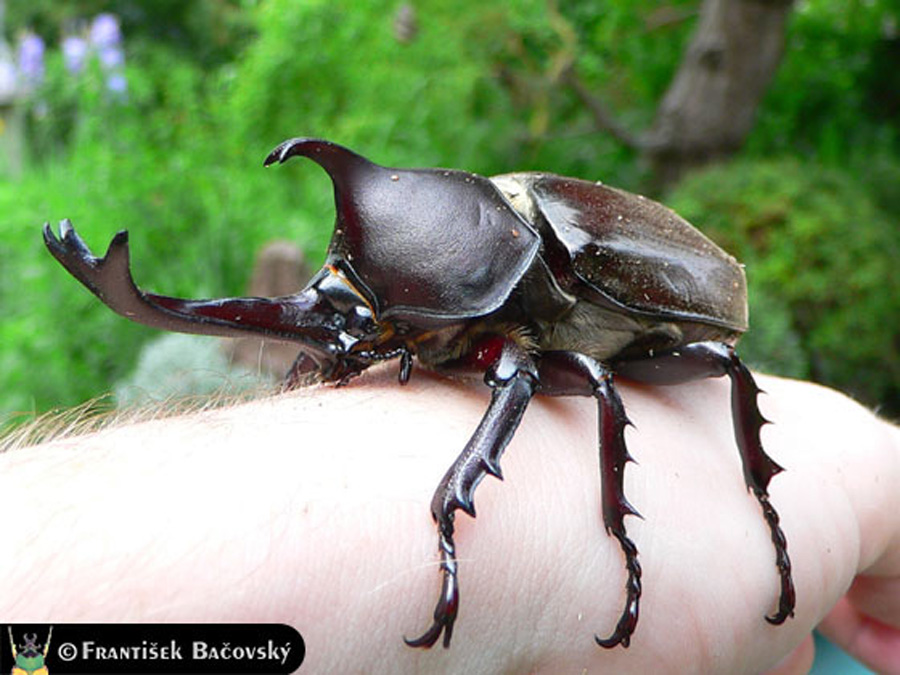Dung beetles are biologically classified as members of the order Coleoptera which includes all true beetles. They have rounded features and hardened forewings that usually have pronounced, parallel ridges. Their front legs are often modified for digging. Most dung beetles have a shiny appearance and may be black, brown, or green in color. These creatures tend to be on the smaller side, rarely larger than 1.5 inches, however some dung beetles can grow to be over three inches long!
What is their life cycle in the soil?
Dung beetles live in various locations in or on the soil depending on their life stage. Eggs, larvae and pupae live protected in the soil. The adults live on the surface. As their name implies, dung beetles eat – dung! They can even prefer droppings of certain species of animals and will seek out the manure by smell. Adult beetles use manure piles as both a food source for themselves and for materials to prepare a breeding ground.

Dung beetles prepare their breeding ground in different ways. Some dung beetles are known as “tunnellers”. In this case, a male and female dung beetle will work together to tunnel underneath of a pile of animal manure. They slowly bury particles of the dung in the soil (talk about a crappy date, huh?). Lame jokes aside, the female then lays her eggs in the buried droppings. These droppings will serve as the home for the dung beetle larvae when they hatch, and until they pupate.
A closely related, and perhaps the most iconic group of dung beetles are the “tumblers”. These beetles will collect manure into balls. They roll them across the landscape to their desired location before burying the particles as a couple, just like the tunnellers.
Finally, the other dung beetles are known as the” dwellers”. These dung beetles will find a dung pile suitable enough to call home and usually do not do any redecorating via burying or balling the manure. They simply show up and start their brood.
What important functions do they provide to the ecosystem?
Pest control
Dung beetles are not generally considered to be pests in cropping systems, and instead can be beneficial in livestock farming. Manure piles provide opportune grounds for breeding for livestock pests. By working to distribute and bury the fresh manure, dung beetles are removing habitat that would otherwise be used by such pests to multiply.

Pest multiplication in pasture systems is especially problematic for internal parasites which persist and spread in manure. Having a healthy population of dung beetles in a pasture ecosystem can reduce the survival of internal parasites excreted by grazers.
Medicines sometimes given to livestock to control intestinal parasites do not always break down in the digestive tract. When excreted, they can be toxic to dung beetles in the manure. This obviously reduces the ability of dung beetles to redistribute manure to halt the life cycle of these parasites.
Supporting the dung beetles in the pasture will naturally limit parasite population growth. These beetles can serve as an important component in an integrated pest management system that still includes deworming when necessary and proper manure management on the farm such as spreading and dragging.
Nutrient redistribution & overall soil health
Soil health is a hot topic that isn’t going away anytime soon. Dung beetles have the potential to do a wide range of work behind the scenes for land managers. There is a positive correlation between the number of dung beetles present in a system, and the organic matter in the soil. Dung beetles can recycle up to 90% of nitrogen from manure back into the soil. This is not surprising considering beetles can bury up to 3.3 pounds of manure each hour. This equates to burying the beetle’s own body weight 250 times in one night! They have got to be pooped by the morning…

Many other soil inhabitants such as fungi, microbes, and plants benefit from the nutrients left in the soil once beetles emerge from the nest as adults. Because most stages in the life cycle of a beetle do such a good job at removing droppings, livestock are more willing to continue to evenly graze pastures. Livestock prefer not to graze near manure and will often avoid these areas causing uneven grazing. By allowing dung beetles to clean up pastures, producers can often get more bang for their buck out of a single pasture.
Rolling on…
Dung beetles are underground soil health vigilantes that can make serious waves in any natural or agricultural ecosystem. Their entire life cycle revolves around getting crap taken care of, and who doesn’t need help with that? Redistributing nutrients and cleaning up the environment is a dirty job – and by supporting dung beetles in performing this task, we can improve the ecosystem.
Answered by Jordyn Bush, University of Kentucky
To receive notices about future blogs, be sure to subscribe to Soils Matter by clicking on the Follow button on the upper right! Explore more on our webpage About Soils. There you will find more information about Soil Basics, Community Gardens, Green Infrastructure, Green Roofs, Soil Contaminants, materials for Teachers and more.

Great blog post! I love it and the jokes too! Dung beetles are super cool!!!